Indications for Rhinoplasty
Rhinoplasty is a separate area of plastic surgery to correct congenital or acquired defects of the nose. With the help of rhinoplasty, it is possible to solve the problems of nasal breathing, correct the external consequences of injuries, and also correct the appearance for aesthetic reasons.

Rhinoplasty Methods
There are two surgical methods for correcting the shape of the nose: open and closed.
- The open method involves an incision in the nostrils – the bridge between them – in order to improve the visualization of the nasal skeleton for further manipulations. It is used for complex surgeries when full visual control over all stages of rhinoplasty is required. Allows easy removal and repositioning of cartilage.
- The closed method uses the possibility of performing surgical manipulations through incisions in the nostrils that are subsequently invisible. In rhinoplasty, the surgeon changes the bone-cartilaginous structure of the nose or its individual parts: he corrects the height and width, removes the hump.

A week before rhinoplasty
- stop taking medications that affect blood clotting;
- stop taking hormonal contraceptives, temporarily replacing them with alternative options to prevent unwanted pregnancy.
- Avoid smoking for several weeks before and after surgery.

Preparing for surgery
The doctor examines the patient, takes a photo of the nose and listens to expectations from the plastic – what shape of the nose would you like to achieve, what to remove.
Computer simulation allows visualizing the result of the operation in advance and discussing it with the patient. If the patient is satisfied with everything, the doctor tells how to prepare for rhinoplasty, gives directions for tests and hardware diagnostics. The doctor must be informed about existing chronic diseases, bad habits, allergic reactions, intolerance to any drugs and local anesthesia.

Operation Process
The nose is operated under general anesthesia. Depending on your situation, correction of both open and closed nose is possible. The procedure itself takes an average of 2 to 2.5 hours. Before the operation, you are carefully examined, first of all, by a doctor and an anesthesiologist, so we can be sure that you will perform the operation in a healthy way.
You will then meet with the surgeon and discuss your wishes with him again. If necessary, make a list of all your questions for your surgeon in advance so that you can participate in a well-prepared consultation on your own.
During the consultation, a Russian-speaking plastic surgery consultant will be with you. After all your questions have been answered, the surgeon will prepare for the operation.

Main side effects of nose reshaping surgery
- Bleeding
- Damage or destruction of the nasal septum
- Skin problems
- Infection
- Airway blockage
- Complications after anesthesia

How is rehabilitation after rhinoplasty:
After the operation, you find yourself in a comfortable two-bed ward, where during the first day your health is closely monitored by a doctor and medical staff who will try to make this short recovery period after the operation as comfortable as possible.
During this period, you may not feel familiar with how you feel: you may feel a little sleepy while recovering from anesthesia. For a week, you will wear a plaster cast around the nose, which is necessary to reshape the bones and cartilage of the nose.
In most cases, the day after surgery, you will be able to leave the clinic and only appear for regular check-ups, where your doctor will assess your recovery period.
